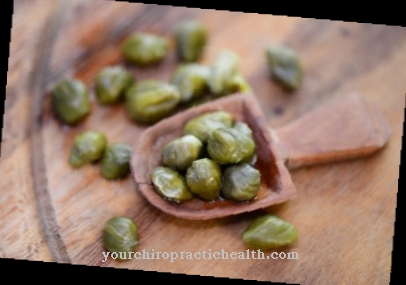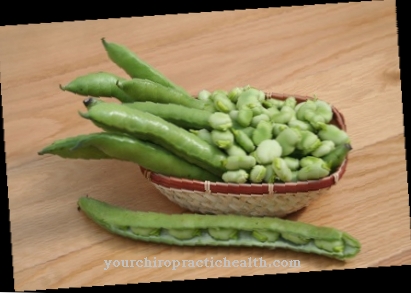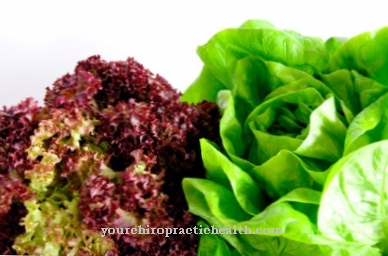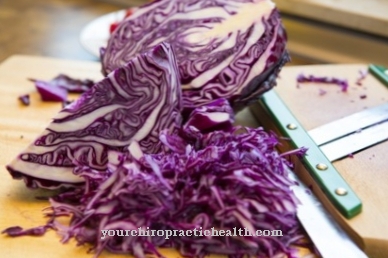celery root, a root vegetable, belongs to the umbelliferae family. It has a large and gnarled root that grows underground. Celeriac is a spicy companion in the kitchen, but it also offers many health benefits.
What you should know about celeriac

The celeriac was used as a vegetable, spice and valuable crop in ancient times and was highly valued in Rome as an antidepressant. In the Middle Ages, celeriac was largely forgotten, but was rediscovered in Italy in the 17th century.
Today Europe is the main consumer of the root vegetables, which are also grown here. The large, gnarled root that celeriac has at its disposal can be 20 cm wide and weigh a kilogram. It protects itself with a green, thick skin under which the fresh, spicy pulp is located. The taste is a bit bitter compared to the celery stalk. Newly harvested celeriac is mild and delicately spicy. If it is harvested late, it tastes strongly spicy to strong. Celery owes its aroma to the abundant essential oils it contains.
The root vegetables are shaped differently, depending on the variety, from round, flat, through highly oval to conical. The leaves of celery are similar to those of parsley. This can be used to season dishes. The celeriac can be harvested from May to November. This should be done when it is dry. In addition, it is important that the tubers are not washed under any circumstances, as moist crops could be attacked by pests. If possible, the harvested celery is not exposed to direct sunlight. The celeriac is available all year round because the celeriac can be stored well.
Importance to health
Celeriac is very healthy. It was already known for its diuretic properties in the Middle Ages and was sold in pharmacies for this purpose. Even today, root vegetables are valued in terms of health. Celeriac strengthens the immune system and the immune system, drains water, has a blood-purifying effect, relieves coughs and is also said to help with depression or anxiety, as it has a relaxing and calming effect.
The celeriac is diuretic due to its high potassium content, so it is helpful for rheumatism and gout and is also often used for purification. If you suffer from kidney disease, you should therefore avoid celery. The healthy celeriac should also prevent the occurrence of high blood pressure and contribute to its reduction. Thanks to its extremely low calorie content, celeriac is also ideal for a figure-conscious diet.
Ingredients & nutritional values
| Nutritional information | Amount per 100 gram |
| Calories 42 | Fat content 0.3 g |
| cholesterol 0 mg | sodium 100 mg |
| potassium 300 mg | carbohydrates 9 g |
| Fiber 1.8 g | protein 1.5 g |
Celeriac has a high proportion of valuable essential oils, which give the root vegetables their typical taste and smell. It also contains potassium, calcium, iron as well as carotenoids and important vitamins such as vitamin C and various B vitamins, which make celeriac extremely valuable in terms of health. In celeriac, the leaves have ten times more calcium than the roots.
Intolerances & allergies
In general, celery is a common cause of food allergies. This also includes celeriac. In particular, the celery allergy is very often combined with a pollen allergy to birch or mugwort. In medicine this is called the "birch-mugwort-celery syndrome". Often there is also an allergy to umbellifers, such as carrots, anise, fennel, coriander, caraway, dill and parsley. The symptoms of celery allergies can be mild, but also life-threatening.
Symptoms range from irritation in the mouth and throat, for example itching, swelling or numbness, discomfort in the nose and eyes such as sneezing, running or blocked nose, red or itchy eyes, gastrointestinal complaints such as diarrhea and convulsions to serious life-threatening reactions that require acute emergency response.It should be noted that, unlike numerous other food allergies, cooked celeriac can also cause symptoms.
Shopping & kitchen tips
The celeriac should be stored in the refrigerator at the highest possible humidity and around six degrees so that it stays fresh. The better the celery bulb is ripe, the longer it can be kept. However, it should be used after 14 days at the latest. Cut areas of the celery should be covered with cling film.
The celeriac should not be in the immediate vicinity of fruit, as the fruit ripening gas accelerates the spoilage. Celery is also suitable for freezing in portions. However, it should be cooked beforehand. Before cooking, the leaves and roots are removed from the tuber. The lower end is cut off generously. The celeriac is then thoroughly cleaned with water and the thick skin peeled off. It has to be cooked long enough for the vegetables to be cooked but not to disintegrate. It is placed in cold water and only simmered gently. Gentle steaming is an alternative to boiling.
This is recommended anyway for the preparation of many dishes, as the valuable ingredients are less destroyed. It is important that the celery is cut into pieces of equal size to ensure even cooking. Discoloration of the celeriac pieces after cutting can be avoided if the preparation is started immediately. When cut into cubes or slices, the celeriac is cooked in about 15 minutes. With whole tubers, however, the cooking process can take up to 45 minutes.
Preparation tips
Celeriac offers numerous preparation options in the kitchen. It can be cooked, but it can also be eaten raw. If it is to be pureed, it must first be boiled until soft and well strained. Then it is refined with cream and butter. Pureed celeriac tastes excellent as a side dish and is also an ideal basis for healthy soups, stews, sauces and hearty vegetable terrines.
The celeriac gives the various dishes their typical note thanks to its strong aroma. Celeriac is also very popular as a tasty part of raw vegetable salads such as Waldorf salads. In combination with apples and various nuts, such as walnuts, the root vegetables harmonize perfectly with sweet and sour taste notes. In addition, celeriac is often combined with pasta in Mediterranean cuisine, for example in the form of lasagna. There are many other fancy recipes with celeriac. Creativity is allowed to run free here.
Good ideas and healthy alternatives are, for example, French fries made from celeriac, the celery schnitzel, which vegans and vegetarians especially like to prepare, grilled trout with celery or stuffed peppers with a tomato and celery ragout. Anything that tastes good is always allowed. There are hardly any restrictions on the use of celeriac.













.jpg)

.jpg)
.jpg)











.jpg)